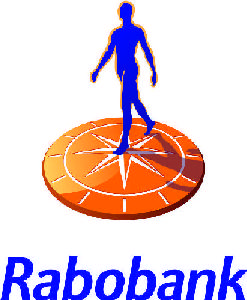English Deutsch Index
Nederlands
337 Suiker en melasse
Audio
Als de kristallen in het diksap groot genoeg zijn gaat de kristalbrij naar een centrifuge. In de snel draaiende trommel met kleine gaatjes blijven de kristallen achter. De stroop loopt door de gaatjes en wordt aan de buitenkant van de trommel opgevangen. Door langs de binnenzijde van de trommel te schrapen komen de suikerkristallen los en vallen door een trechter op een lopende band.
De stroperige vloeistof die aan de zijkant uit de centrifuge komt bevat nog veel suiker en om die eruit te halen wordt deze gemengd met andere sapstromen, gekookt en weer gecentrifugeerd. De stroop uit de derde fase heet melasse en bevat nog opgeloste suiker. Vroeger werd hiervan alcohol gestookt. Ook kan er stroop van gemaakt worden. Een afvalproduct hier is de ruwe potasch.
Tegenwoordig wordt de meeste melasse gebruikt in veevoer.
Bij de vroegere centrifuges moest handmatig tijdens het draaien de suiker gelost worden. Met z’n tweeën schraapte men dan met behulp van een houten spaan de suiker van de wand. Dat was lastig en gevaarlijk werk. Er brak nogal eens een spaan.
Tegenwoordig zijn er volautomatische centrifuges, waardoor het lastige schrapen niet meer nodig is.
De ruwe potasch wordt in een oven gebrand en wat dan overblijft is een zoutenmengsel die direct verkocht wordt aan bedrijven die hier min of meer zuivere kaliumzouten uit raffineert. Deze kaliumchloride en kaliumsulfaat worden als meststof gebruikt in de landbouw. Melasse werd ook wel benut voor gistfabricage voor bakkerijen. Melasse van andere fabrieken werd met kleine tankscheepjes aangevoerd en de spiritus werd in tonnen opgeslagen en meestal per schip vervoert naar distilleerderijen waar men er allerlei dranken van maakte door toevoeging van kruiden en vruchten.
Beluister hiervoor de uitleg bij de branderij “Amelia.”
Vervolg uw route rechts om de hoek, de gang met vitrines, met nummer 343 “Suikerbroden”.
English
337 Suiker en melasse (Sugar and molasses)
Audio
When the crystals in the thick juice are large enough, the crystal slurry goes into a centrifuge. The crystals remain in the fast-rotating drum with small holes. The syrup runs through the holes and is collected on the outside of the drum. By scraping along the inside of the drum, the sugar crystals are released and fall through a funnel onto a conveyor belt.
The viscous liquid that comes out of the side of the centrifuge still contains a lot of sugar and to remove it, it is mixed with other juice streams, boiled and centrifuged again. The third-stage syrup is called molasses and still contains dissolved sugar. In the past, alcohol was distilled from this. It can also be used to make syrup. A waste product here is the raw potash.
Today, most molasses is used in animal feed.
With the earlier centrifuges, the sugar had to be unloaded manually during turning. Two men scraped the sugar off the wall with the help of a wooden trowel. That was difficult and dangerous work. Quite often a trowel broke.
Nowadays there are fully automatic centrifuges, which means that the tedious scraping is no longer necessary.
The raw potash is roasted in a furnace and what remains is a mixture of salts that is sold directly to companies that refine more or less pure potassium salts from it. This potassium chloride and potassium sulphate are used as fertilizers in agriculture. Molasses can also be used for yeast production for bakeries. Molasses from other factories was brought in by small tankers and the spirits were stored in barrels and usually transported by ship to distilleries where they were made into all kinds of drinks by adding herbs and fruits.
Listen to the explanation at the roastery "Amelia."
Continue your route on the right around the corner, the corridor with display cases, with number 343 “Suikerbroden”.
Deutsch
337 Suiker en melasse
Audio
De QR code voor deze pagina is 




